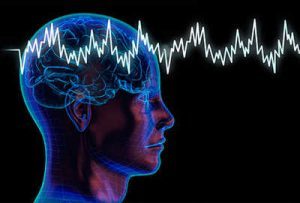- Home
- Editorial
- News
- Practice Guidelines
- Anesthesiology Guidelines
- Cancer Guidelines
- Cardiac Sciences Guidelines
- Critical Care Guidelines
- Dentistry Guidelines
- Dermatology Guidelines
- Diabetes and Endo Guidelines
- Diagnostics Guidelines
- ENT Guidelines
- Featured Practice Guidelines
- Gastroenterology Guidelines
- Geriatrics Guidelines
- Medicine Guidelines
- Nephrology Guidelines
- Neurosciences Guidelines
- Obs and Gynae Guidelines
- Ophthalmology Guidelines
- Orthopaedics Guidelines
- Paediatrics Guidelines
- Psychiatry Guidelines
- Pulmonology Guidelines
- Radiology Guidelines
- Surgery Guidelines
- Urology Guidelines
New treatment has potential of reversing Parkinson's disease, finds Clinical trial

A pioneering clinical trial has found an experimental treatment that offers hope that it may be possible to restore the cells damaged in Parkinson's disease. Potentially promising results of the trialsare reported in the Journal of Parkinson's Disease.
The study investigated whether boosting the levels of a naturally-occurring growth factor, Glial Cell Line-Derived Neurotrophic Factor (GDNF), can regenerate dying dopamine brain cells in patients with Parkinson's and reverse their condition, something no existing treatment can do.
Glial Cell Line-Derived Neurotrophic Factor (GDNF) is known for its neurorestorative and neuroprotective effects in nonhuman primate models of Parkinson’s disease.
Six patients took part in the initial pilot study to assess the safety of the treatment approach. A further 35 individuals then participated in the nine-month double-blind trial, in which half were randomly assigned to receive monthly infusions of GDNF and the other half placebo infusions. After the initial nine months on GDNF or placebo, the open-label extension study took place, which explored the effects and safety of continued exposure to GDNF for another 40 weeks in the patients previously receiving GDNF (80 weeks in total) and the effects of 40 weeks of open-label GDNF in those subjects who had previously received placebo for the first 40 weeks. All 41 patients randomized and treated in the parent study (prior GDNF and placebo patients) were enrolled and completed the open-label extension study.
A specially designed delivery system was implanted using robot-assisted neurosurgery. This delivery system allowed high flow rate infusions to be administered every four weeks and enabled so-called Convection Enhanced Delivery (CED) of the study drug. Four tubes were carefully placed into each patient's brain, which allowed GDNF to be infused directly to the affected areas with pinpoint accuracy via a skull-mounted transcutaneous port behind the ear. After implantation and over the following several years the trial team administered, more than 1000 brain infusions, once every four weeks over 18 months to study participants. The high compliance rate (99.1%) in participants recruited from throughout the UK has potentially demonstrated that this new administration process for repeated brain infusion is clinically feasible and tolerable.
After nine months, there was no change in the PET scans of those who received placebo, whereas the group who received GDNF showed an improvement of 100% in a key area of the brain affected in the condition, offering hope that the treatment was starting to reawaken and restore damaged brain cells.
"The spatial and relative magnitude of the improvement in the brain scans is beyond anything seen previously in trials of surgically delivered growth-factor treatments for Parkinson's," explained principal investigator Alan L. Whone, PhD, FRCP, Translational Health Sciences, Bristol Medical School, University of Bristol, and Neurological and Musculoskeletal Sciences Division, North Bristol NHS Trust, Bristol, UK. "This represents some of the most compelling evidence yet that we may have a means to possibly reawaken and restore the dopamine brain cells that are gradually destroyed in Parkinson's."
By 18 months, when all participants had received GDNF, both groups showed moderate to large improvements in symptoms compared to before they started the study and that GDNF was safe when administered over this length of time. However, no significant differences between the groups (placebo followed by GDNF versus GDNF for the entire study period) in the primary and secondary clinical endpoints were seen.
The question of whether clinical benefits lag behind biological changes seen in PET scans during disease reversal or need a longer period of repeated exposure to the drug to develop cannot be answered definitively on the basis of the extension study results. However, the integrated results of the two studies suggest that:
- Attending on an out-patient basis over 18 months, to receive infusions every four weeks via a skull-mounted port, is feasible.
- This treatment regimen and novel method of drug administration are well tolerated.
- Further testing of GDNF in a larger-scale study and including the use of higher doses are required to definitively determine whether GDNF has a future role as a neurorestorative treatment for Parkinson's.
According to Steven Gill, MB, MS(Lond.), FRCS, lead neurosurgeon and designer of the CED device, of the Neurological and Musculoskeletal Sciences Division, North Bristol NHS Trust, Bristol, and Renishaw plc, New Mills, Wotton-under-Edge, Gloucestershire, UK, "This trial has shown that we can safely and repeatedly infuse drugs directly into patients' brains over months or years. This is a significant breakthrough in our ability to treat neurological conditions, such as Parkinson's, because most drugs that might work cannot cross from the blood stream into the brain due to a natural protective barrier."
"It's essential to continue research exploring this treatment further -- GDNF continues to hold potential to improve the lives of people with Parkinson's," commented Dr. Whone.
I believe that this approach could be the first neuro-restorative treatment for people living with Parkinson's, which is, of course, an extremely exciting prospect," added Dr. Gill.
For more details click on the link: DOI: 10.3233/JPD-191576

Disclaimer: This site is primarily intended for healthcare professionals. Any content/information on this website does not replace the advice of medical and/or health professionals and should not be construed as medical/diagnostic advice/endorsement or prescription. Use of this site is subject to our terms of use, privacy policy, advertisement policy. © 2020 Minerva Medical Treatment Pvt Ltd